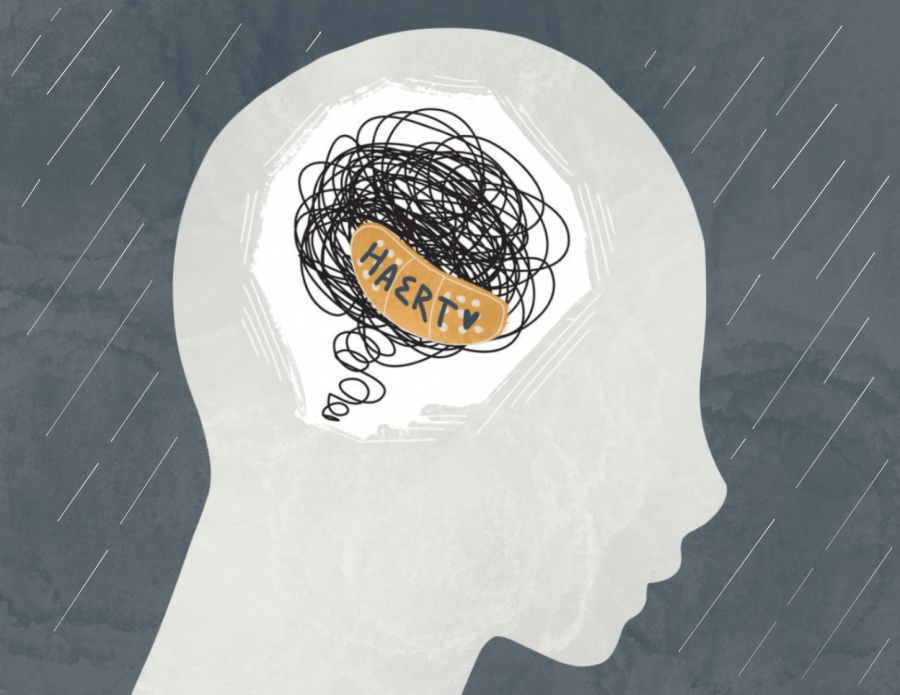Especially during shelter-in-place, it’s crucial that we take every measure necessary to ensure that students have unfettered access to mental health services. By normalizing the use of mental health services and increasing their accessibility, we can eliminate many of the obstacles that prevent students from getting the help they need.
Editorial: LAHS’s mental health response leaves much to be desired
March 10, 2021
In the time of distance learning and shelter-in-place orders, providing accessible mental health services at Los Altos High School is more important than ever. A November study from the Centers for Disease Control found that in adolescents aged 12–17, mental health-related emergencies requiring hospitalization from March to October rose 31 percent compared to the same period last year.
Before voicing our concerns, we want to acknowledge our administration’s well-intentioned efforts to address these issues by providing virtual counseling services and implementing the HAERT mental wellness program, which is accredited by the Western Association of Schools and Colleges (WASC). We also recognize the numerous obstacles facing educators and administrators who are attempting to provide mental health services during a global pandemic.
However, we believe that there is still room for improvement. The administration should be responsible for providing access to comprehensive mental health services in a transparent manner.
Here are The Talon’s proposed solutions to more closely meet students’ needs.
NORMALIZING THE USE OF MENTAL HEALTH SERVICES
At school, the stigmatization of using the mental health services discourages students from taking advantage of them. The Talon sees a number of ways to ensure students feel safe reaching out for help.
Yearly Check-ins
Similar to the yearly meetings with academic counselors, students should have yearly check-ins with Community Health Awareness Council (CHAC) counselors.
While we respect preserving the confidentiality of counselors, such meetings will familiarize students with CHAC, and while we understand the financial barriers of these check-ins, mental health should be held in the same regard as academics. Funding yearly check-ins would greatly help in destigmatizing and publicizing the use of CHAC on campus.
Aligning with the WASC Self-Study Report, the school should also be actively encouraging teachers to provide students with information about existing support systems.
Extension Email Template
To further normalize asking for help, the administration should create an email template for requesting extensions.
For a student experiencing a mental health crisis, it can be difficult to construct an email outlining their circumstances. A template email notifying the teacher of their crisis and respectfully requesting an extension can eliminate feelings of misgiving. Teachers may also gain insight into why their student is struggling and what they can do to help.
It’s true that making such a template would require students to adhere to a certain standard of honor. Still, we believe that a vast majority of students would realize the immorality of exploiting a resource meant to aid students struggling with mental health.
Talk about it
Let’s normalize talking about mental health at school.
From hosting monthly expert talks in the Eagle Theatre, to incorporating mental health into the educational curriculum, there are several ways for the administration to promote awareness and inform students. Information encourages conversation, an important step towards mitigating the stigma surrounding mental health.
INCREASING ACCESSIBILITY
Website
Especially in our virtual setting this year, it is imperative that students and families are able to find clear and useful information on the LAHS website to accommodate their specific needs.
CHAC’s current description is a short, vague paragraph, and while some students are aware of the District’s licensed therapists, including a Stanford psychiatric fellow, information about their roles on the website is sparse. Increased specificity of information on mental health professionals would allow students to better understand the resources available to them.
However, an even bigger issue with the website is the inaccessibility of CHAC’s referral form. The form isn’t easy to find, and it currently requires the names and email addresses of the submitters. Both of these factors may deter individuals from submitting peers who require professional help.
We offer two possible solutions: 1) The referral form on the school website can be linked on the main page of the website. 2) The administration can create and push out to students a Chrome extension providing easy, anonymous access to the referral form.
HAERT
While the District has poured much time, money and effort into HAERT as a preventative measure, not enough attention is paid to crisis intervention.
According to an Instagram poll sent out by The Talon, 94 percent of respondents find HAERT unhelpful. Sophomore Dylan Chan was part of the six percent who felt otherwise, citing HAERT as “a good start.”
“Especially during this year, I have experienced anxiety and depression, and you feel like you’re in your head 24–7,” Dylan said. “It’s something people don’t really understand until they go through it. I know HAERT isn’t popular, but I think it brings awareness and plays a role in taking away the stigma from mental health.”
Despite the awareness HAERT may bring, Dylan agrees that the administration is still out of touch with students’ priorities. Because HAERT activities are assigned on the asynchronous Wednesday, many students feel that it is an addition to their already-long list of assignments.
“Most students don’t want to do it, and I think that’s what makes HAERT so performative,” junior Ashley Knauss, part of the 94 percent, said. “As for the actual content, it’s nothing earth shattering. I don’t even listen to the content, I just answer the quiz and get 100 percent without any prior knowledge. Making HAERT the attendance activity after poor student feedback just doesn’t feel right.”
Furthermore, the administration’s classifying of school spirit events as wellness tools is ignorant. Instead, the school should implement measures that proactively prevent excess stress, such as anonymous teacher feedback forms. We believe that these changes ultimately provide students with a more robust slate of preventative measures.
Especially during shelter-in-place, it’s crucial that we take every measure necessary to ensure that students have unfettered access to mental health services. It’s important to highlight school administrators’ continued dedication to meeting this goal while recognizing that there are more effective ways to address students’ needs.
By normalizing the use of mental health services and increasing their accessibility, we can eliminate many of the obstacles that prevent students from getting the help they need.


